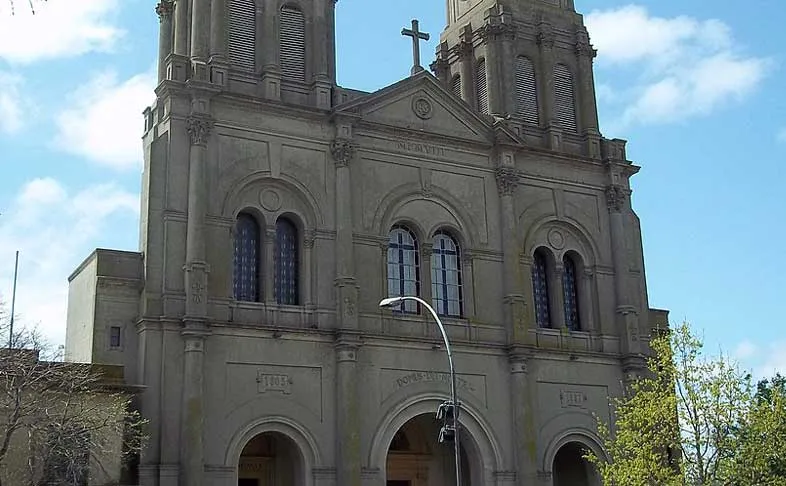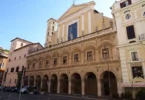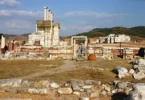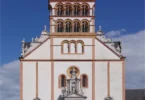Introduction
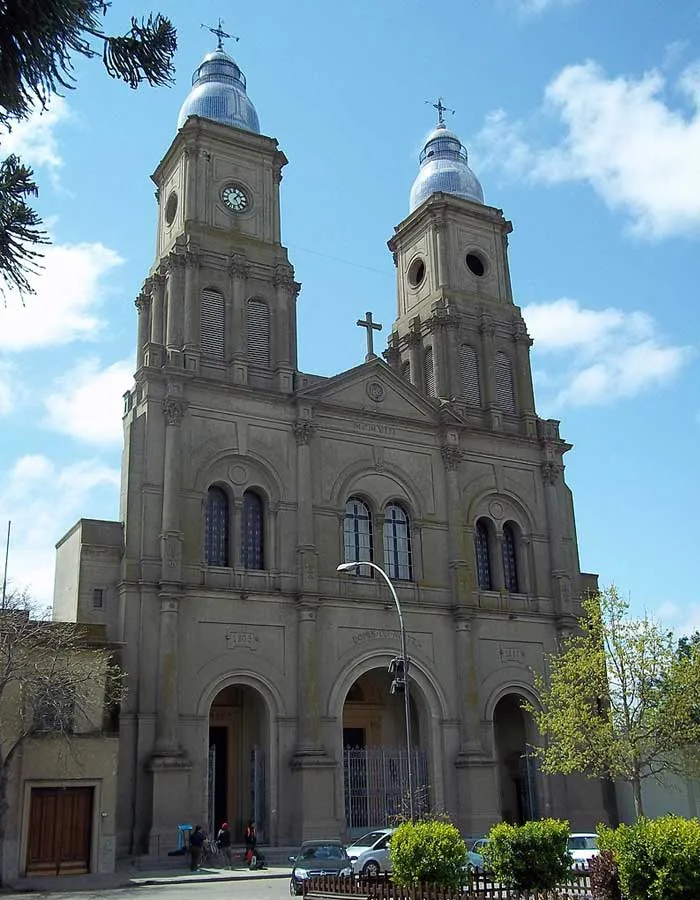
The Cathedral Basilica of Florida (Spanish: Catedral Basílica de Florida) is the main Roman Catholic church building of Florida, Uruguay. It is the see of the Roman Catholic Diocese of Florida since 1956.
At this place there was originally another, smaller church, the Chapel of Our Lady of Luján of El Pintado (Spanish: Capilla de Nuestra Señora del Luján del Pintado), which in 1805 was elevated to parish church. (Note that Our Lady of Luján was declared patron saint of Uruguay by Pope Pius IX in 1930).
In 1887 was built the current temple; over its door reads the Latin expression Domus Dei nostri (English: House of Our God).
Nowadays it is the National Sanctuary of the Virgin of the Thirty-Three (Spanish: Santuario Nacional de la Virgen de los Treinta y Tres); the image of Our Lady of the Thirty-Three, patron saint of Uruguay, is venerated here.
History of Cathedral of Florida, Uruguay

The devotion to this virgin did not originally have any extraordinary event or any sign beyond the natural order of things. On June 14, 1825, after the Liberation Crusade, the patriots held the Florida Congress in the town of Florida. On August 25, the congress declared the independence of the Eastern Province of Uruguay, as well as its union with the United Provinces of the Río de la Plata. After the declaration, the congressmen would have attended a ranch next to the place where the congress was held, where the image of the Virgin of the Thirty-Three was located.
In 1857 Manuel Oribe gave the virgin a gold crown, in thanksgiving for having saved himself and his family from a shipwreck. He said that he owed this grace of hers to the Virgin of the Thirty-Three and that he always entrusted himself to her.
In 1894 Mariano Soler, the first Archbishop of Montevideo, ordered to place before the niche that kept the image of the Virgin of the Thirty-Three in the Cathedral of Florida, a marble plaque that says: “Before her the Thirty-Three bowed their flag and the conventions of independence also invoked it.
In 1961 Monsignor Humberto Tonna asked the Pope for the coronation for the image of the Virgin of the Thirty-Three. Pope John XXIII granted that grace on March 8, 1961. On November 21, 1962, the Pope designated the Virgin of the Thirty-Three as patroness of Uruguay.
On August 25, 1975, the Executive Power declared the Florida Cathedral and the image of the Virgin of the Thirty-Three a historical monument.
In April 1987, on the occasion of the first visit of Pope John Paul II to Uruguay, the image of the Virgin of the Thirty-Three presided over the celebration of the open mass officiated by the pontiff in Tres Cruces. She also presided over the ordination ceremony of 13 priests celebrated by the Pope in Florida on May 8, 1988.
The Door of the Cathedral
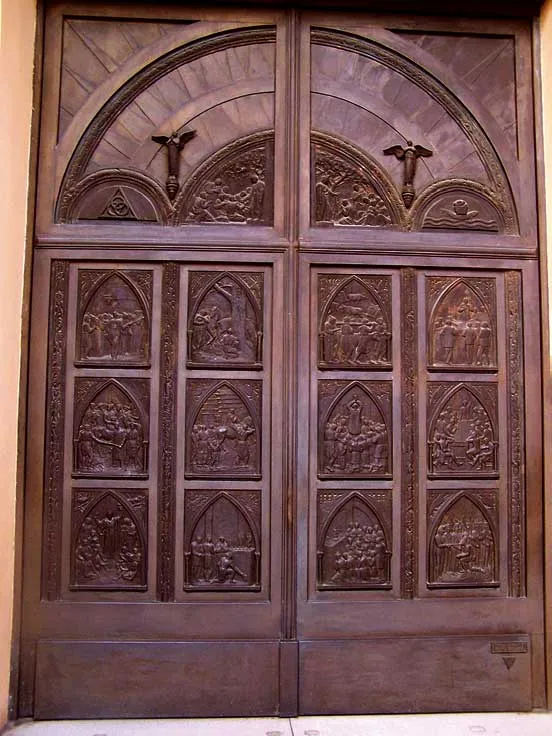
The Cathedral Basilica, Sanctuary of the Virgin of the Thirty-Three Orientals of FLORIDA, has been a National Historical Heritage since 1975. The central access door was inaugurated on September 8, 1962 and is the work of the sculptors Don José Belloni and his son Stelio.
This door is unique in the country for its conception and realization.
Just looking at it reveals its artistic value conceived in bas-reliefs and high-reliefs that highlight the shapes in light and shadow, highlights and depths.
The harmony in its presentation is the inspiration of sensitive creators and its theme leaves, in bronze, moments of the History of a nation: URUGUAY and of a department: FLORIDA, linked to religion. It also rescues -as if the above were not enough- elements of the native flora and fauna. For all this we believe that in addition to an artistic, historical and documentary legacy, it is a message of love for the Homeland and Life, for the past, present and future.
“…He gave us the soul of the Homeland in bronze…” Emilio Carlos Tacconi.
In 1979 we had the pleasure of interviewing Stelio Belloni who gave us the details of the door’s history, its conception, its construction and assembly. In this paper we will summarize how we should look at it to understand the message of its authors. We know that by looking at it as Belloni taught us, we will learn to value it, know it and enjoy it.
Virgin of the Thirty-Three (Our Lady of Uruguay)
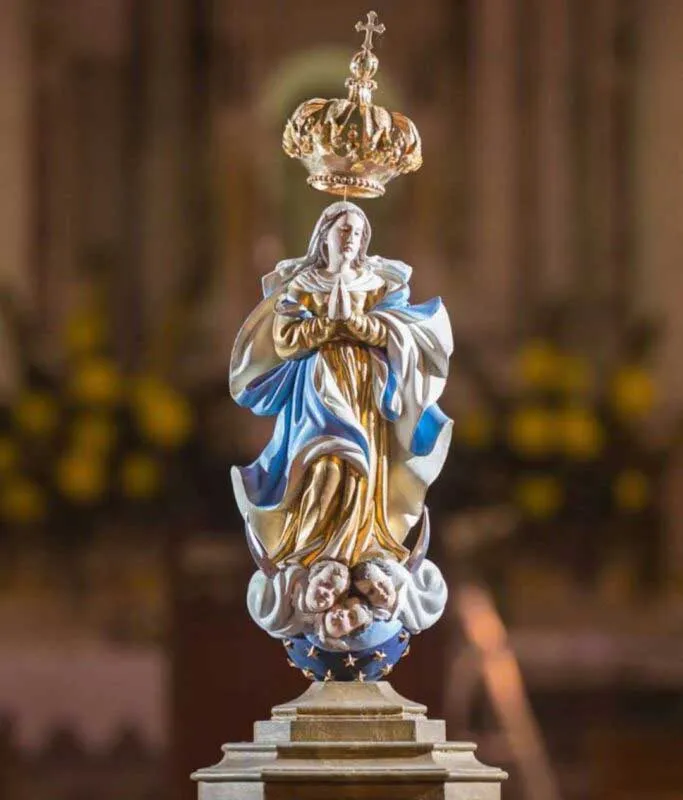
Virgin of the Thirty-Three (Our Lady of the Thirty-Three / Our Lady of Uruguay) also known as the Liberator of Uruguay is the title of the Virgin Mary and the Patroness of Uruguay.
Its carving dates from the 18th century by the Guarani and was entrusted to Antonio Díaz, an Indian from Santo Domingo de Soriano, from whom he received his first chapel in El Pintado.
Founder of the Villa de San Fernando de la Florida in 1825, she saw the Thirty-Three Orientals on foot with the tricolor flag, the provisional government and the assembly that declared our independence.
She was honored over time with different crowns, one presented by Manuel Oribe and another with jewels from oriental women.
Declared Patron Saint of the Oriental Republic of Uruguay by Pope John XXIII, she was solemnly crowned at Piedra Alta in 1961. Pope John Paul II honored her at Tres Cruces and made a pilgrimage to her in Florida.
It’s Sanctuary-Cathedral, which rises in front of the Plaza de la Asamblea, is enriched with delicate paintings that represent the birth of Jesus, Pentecost and the Assumption and Coronation of Mary. Its bronze doors, the work of Belloni, stand out.
Origin of Devotion
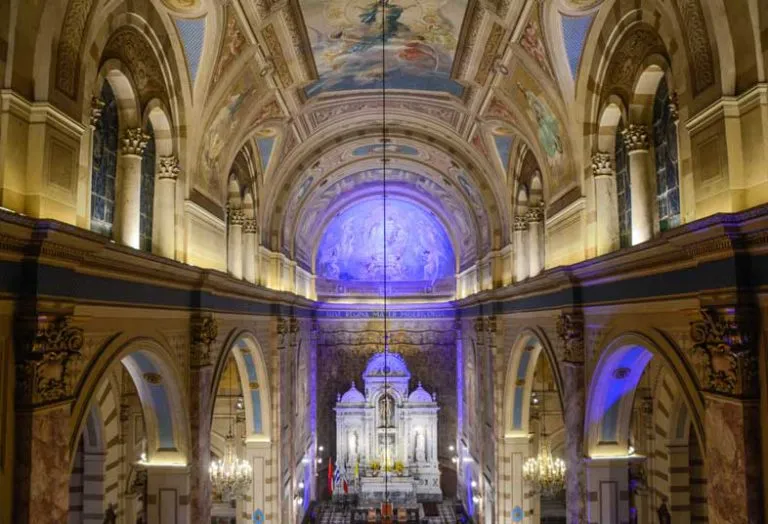
The origin of this invocation of the Virgin of the Thirty-Three is linked to the liberating deed of the Uruguayan heroes. The devotion did not have in its origin any extraordinary event, no sign that goes beyond the natural order of things.
It is indeed originated in a popular consensus, in a sense of faith. Indeed, in the first quarter of the last century, a yearning for freedom had spread throughout the territory of the Banda Oriental, picked up by José Artigas who, when facing it in his ideology, in his action as a rural leader and in the first organization policy that he gave to these provinces, he became the “Protector of the Free Peoples”. Three aspects of the artiguista feat can be pointed out, which reflect this desire for existing freedom and give it a doctrinal and organizational basis.
- The Exodus of 1811, where all the people, frustrated in their expectations of freedom, prefer to leave their homes and fields and march behind their boss to carry out with him a unique experience of independence in America: “they believed they were a free people, with the consequent sovereignty”, Artigas would say explaining this phenomenon.
- The Congress of 1913, where the deputies of each department are going to lay the foundations for the independence of these provinces. Artigas gives his famous “instructions” establishing his doctrine of freedom and federation.
- The short (1815), but effective government of Artigas, which does not neglect any important aspect for the free and dignified life of a people: agrarian reform, trade, navigation, education, public health, religious attention.
The people lived that exalting experience that would be cut short by the betrayal “of the bad Spaniards and worse Americans”, as Artigas himself will say. Artigas retired to the sister country of Paraguay, where he spent 30 years in silence. But his ideas remained.
In 1825 they were retaken in the Liberation Crusade, by the Thirty-Three Orientals. They meet in Florida, where they hold the National Independence Assembly. In the Piedra Alta, converted into the Altar of the Homeland, they proclaim, on August 25, the Declaration of National Independence. It was then that they brought before the small image of the Virgin Mary, which was venerated in the village chapel, their yearning for freedom.
History of Virgin of the Thirty-Three
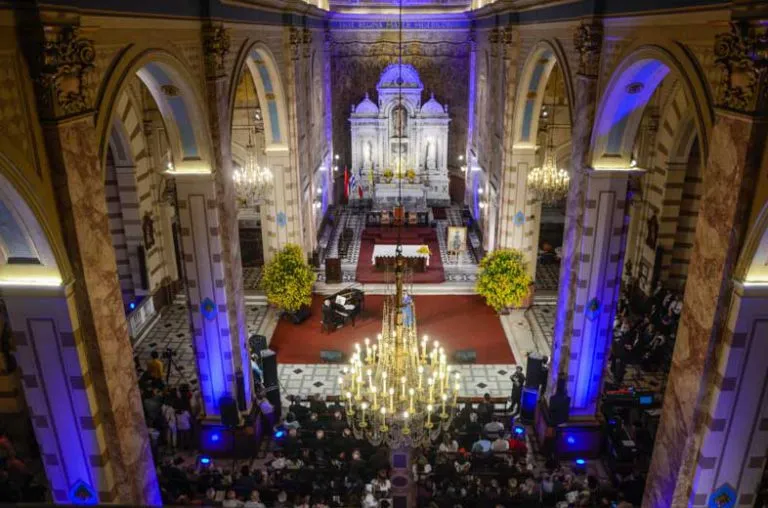
Within the history of the Church in Florida, three important facts should be noted:
- Prior to the founding of the city, the presence of the Society of Jesus with the work of the famous Jesuit Missions. In them, the towns that comprised them (current North Uruguay) were given a corporatist-type social conformation where the different aspects of the culture and life of the town were attended to: education, work, music, and even sculpture; precisely the image of the Virgin of the Thirty-Three is made of Paraguayan cedar, and according to its style and characteristics it is believed to have been carved in the Jesuit Missions. 20 km from the city of Florida, the estancia de la Calera is preserved, where the Jesuits had a large rural establishment for breeding and slaughtering cattle and salting, on the corner of the Santa Lucía river and the Arias stream.
- The second fact is the founding of Florida. Given the vicissitudes in which the old town of El Pintado lived, in a stony mountain range, the priest Santiago Figueredo obtained from the superior government a safer and more fertile place on the shores of the Santa Lucía River, and there he founded the current city of Florida .
- And the third event is in 1825, when the Florida Assembly meets to draft the Act of the Declaration of National Independence, presided over by Fr. Juan Francisco Larrobla. In this cultural and historical context, the visit of the Florida Assembly members to the Virgin Mary venerated in a ranch next to the Assembly ranch was spontaneous. Since then that image of Mary, begins to be popularly called the “VIRGIN OF THE THIRTY-THREE”.
History of the Image of Virgin of the Thirty-Three
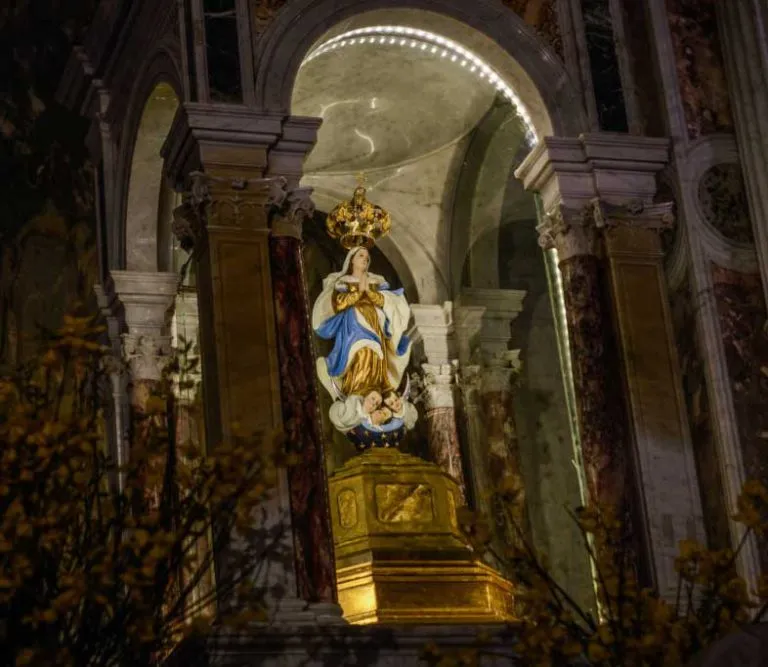
This image dates from the 18th century and is of Guarani origin. It was venerated by the Thirty-Three Orientals in 1825. In 1857, one of them, General Manuel Oribe, presented a golden crown as a gift to the Virgin.
On 8 September 1930, Pope Pius XI formally declared Our Lady of Lujan as the Patroness of Uruguay. The Papal document was signed by Cardinal Eugenio Pacelli, the future Pope Pius XII. In 1962, the image was solemnly crowned by bishop Humberto Tonna. Soon afterwards, Pope John XXIII declared her patron saint of Uruguay. The image was consecrated by Pope John Paul II in his visit to Uruguay in 1988.
Historical Review
1. The gold crown given by General Manuel Oribe, second in command of the Thirty-Three.
In 1857, General Don Manuel Oribe gave a golden crown to the Virgin of Florida, in thanksgiving for having saved himself and his family from a shipwreck. He said that he owed this grace to the Virgin of the Thirty-Three, and that he always entrusted himself to her.
General Oribe lived in La Unión (Montevideo), and asked Don Felipe Irurreta of Florida, of whom he was a friend, to measure the head of the Virgin of the Thirty-Three. The crown was later delivered to the Cura Vicario Pbro. Majeste.
2. The plaque placed by Mons. Mariano Soler.
In 1894 mons. Soler, the first Archbishop of Montevideo, ordered to place before the niche that kept the image of the Virgin of the Thirty-Three in the Cathedral of Florida, a marble plaque that literally says, referring to the image of the little Virgin: “Before her the Thirty and Three bowed their flag and the independence conventions also invoked it.
3. The Coronation. Bishop Humberto Tonna asked the Pope for the privilege of coronation for the image of the Virgin of the Thirty-Three. Pope John XXIII granted this grace on March 8, 1961. For this reason, the celebration of November of that year had a unique character: in solemn Mass, with the presence of the Apostolic Nuncio and all the Bishops of Uruguay, authorities of government and pilgrims from all parts of the country, the coronation of the image of the Virgin of the Thirty-Three was held. The following year, on November 21, 1962, the Pope named the Virgin Mary under this dedication as “PATRONA OF URUGUAY”. Thus the feast of the Virgin has acquired a national character.
4. Historical Monument
The Executive Power of Uruguay, when commemorating on August 25, 1975, the sesquicentennial of the Declaration of National Independence, declared the Holy Cathedral Church and the Image of the Virgin of the Thirty-Three a Historical Monument.
5. The visits of Pope John Paul II
The Virgin of the Thirty-Three presided over the Celebration of the Eucharist, officiated by John Paul II in Tres Cruces (Montevideo) on the occasion of the Pope’s first visit to Uruguay in April 1987. She also presided over the Celebration in Florida in which the The Pope ordained 13 Deacons as Priests on May 8, 1988. In all the speeches and homilies made on the occasion of his two visits, the Pope alluded to the Virgin of the Thirty-Three.
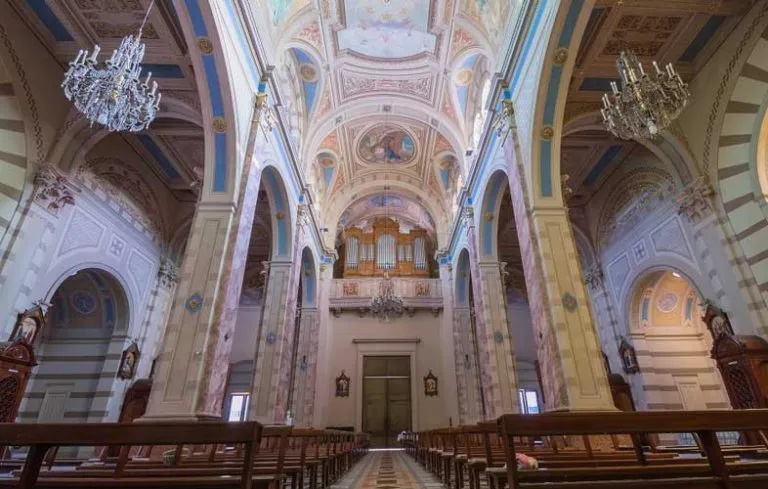
Devotions and Celebrations
The Cathedral of Florida is the shrine where this image is venerated. Ever since the country’s independence, there have been pilgrimages to it, for instance, in times of pests. The first National Pilgrimage was in 1908. A very important pilgrimage was carried out by bishop Miguel Paternain in 1945, covering almost one half of the whole country.
According to very old testimonies, whenever there were plagues and droughts, there were prayer processions with the Virgin of the Thirty-Three. After obtaining the grace, the thanksgiving mass was prayed and the blessing with the Blessed Sacrament was given. Special occasions for prayers were collective misfortunes, such as cholera in 1866, or epidemics such as typhus and smallpox. The first national pilgrimage takes place on August 15, 1908, organized by the Mariana Mayor Congregation of Montevideo.
The Catholics and Leagues of Durazno and Sarandí Grande, made several pilgrimages, leaving the flag of the Thirty-Three and the two Communion Lanterns as a souvenir. The pilgrimages of Mercedes and San José, left as a memory of their coming the two lamps that are in the niche of the Virgin. In 1945 the Diocesan Bishop mons. Miguel Paternain had the happy and original idea of taking a tour carrying the image of the Virgin of the Thirty-Three throughout the diocese, almost half of Uruguay.
The journey that lasted from October 6 to 28, 1945 gave rise to small popular missions in the large cities through which it passed: Minas, Treinta y Tres, Melo, Tacuarembó, Paso de los Toros, Durazno, Sarandí and Florida. In the small towns and along the way – in long stretches the road did not yet exist – people gathered with unusual enthusiasm. Everywhere it was a beautiful occasion to unite devotion to the homeland tradition, with typical tributes of horses, parades of wagons and cars.
Since then the pilgrimage has been a classic celebration throughout the diocese, and it takes place on the second Sunday of November. The traditional scheme of a solemn Mass in the morning and a procession in the afternoon through the streets of the city has evolved. Now a great celebration is held in the open air, in the park where the act of the Declaration of National Independence was read in 1825.
Long walks have been replaced by more relaxed celebrations, based on reading and meditating on the Word. For some years now, a 13 km walk has been carried out, mainly for young people, carrying the Image of the Virgin, praying, singing and reflecting on the theme of the year.
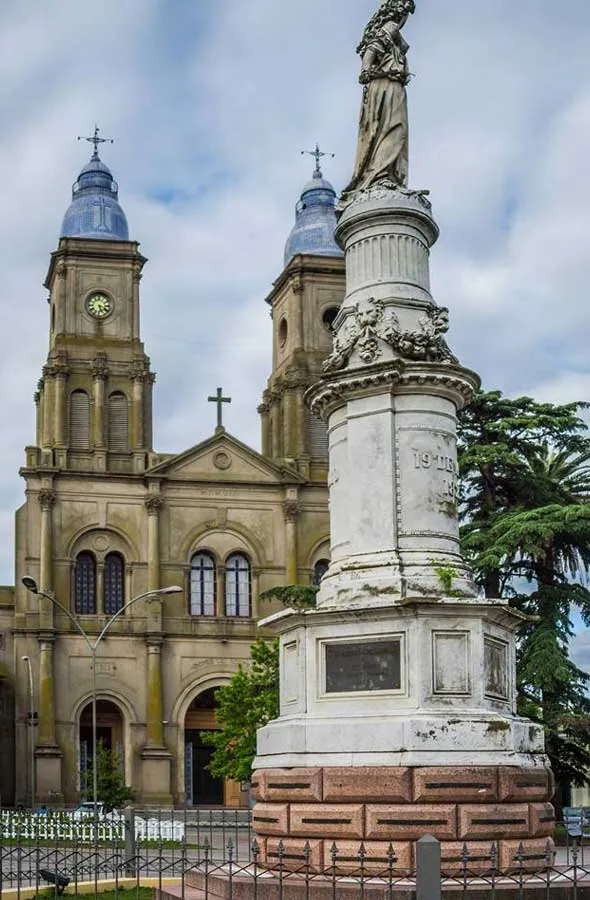
Feast Day - 2nd Sunday of November
Feast Day of Our Lady of Uruguay also known as Our Lady of Thirty Three held on the Second Sunday of November.
Mass Time
Weekdays
Saturdays
Sundays
Church Visiting Time
Contact Info
Dr. Alejandro Gallinal, 504, 94000 Florida,
Departamento de Florida, Uruguay.
Phone No.
Tel : +598 4352 2285
Accommodations
How to reach the Cathedral
Carrasco International Airport (or) Carrasco/General Cesáreo L. Berisso International Airport in Uruguay is the nearby Airport to the Cathedral.
Parada Calle Calleros Train Station in Florida, Uruguay is the nearby Train Station to the Cathedral.

